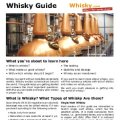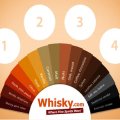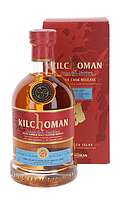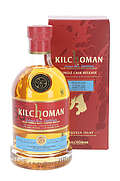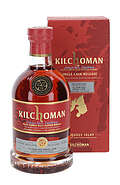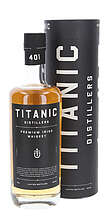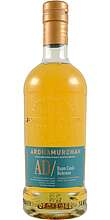Peated and Unpeated Whiskies
Scotch Single Malt Whisky can be classified into two main flavours: peated (smoky) and unpeated (non-smoky). The smoky aroma in Whisky results from the method of drying the malt. If the malt is dried over a peat fire, the components of the peat smoke that have not been completely turned into carbon dioxide and water vapour adhere to the malt. These aromatic compounds are transported through all production steps into the finished Whisky.
In contrast, the malt for unpeated Whisky is dried with hot air without any smoke. The preferences for one of the two production methods are distributed quite asymmetrically among the consumers. A majority of connoisseurs like both peated and unpeated Whiskies. Another fraction prefers peated Whisky and tolerates unpeated Whisky. However, a non-negligible percentage of connoisseurs do not like peated Whisky. Therefore different sets of peated, unpeated and mixed Whisky samples were offered to the participants, thus making sure that each participant received the type of Whisky they liked best.
This approach made sure that no Whiskies were rated poorly due to individual preferences or dislikes. Perhaps this approach is also the reason why the mean value of the quality ratings (3.3 to 3.5 points) was 0.3 to 0.5 scale points (7.5% to 12.5%) above the middle of the scale (3.0). Perhaps the reason for these ratings above the mean value was that the participants liked the samples a bit more than the average of the Whiskies they know. But maybe the blind tasting was just so interesting and unusual that the Whiskies were rated slightly better than average.
Table 6. Statistical Summary of the Results for Peated Bottlings
| Peated Samples | Count | Percent |
|---|---|---|
| Amount of samples | 551 | 41,4% |
| Amount of chill filtered samples | 274 | 49,7% |
| Amount of non chill filtered samples | 277 | 50,3% |
| positive identified chill filtrations | 110 | 40,1% |
| non positive identified chill filtrations | 164 | 59,9% |
| positive identified non chill filtrations | 162 | 58,5% |
| non positive identified non chill filtrations | 113 | 40,8% |
| positive identified filtrations | 272 | 49,4% |
| non positive identified filtrations | 277 | 50,3% |
| Mean | ||
| Average quality chill filtration | 3,5 | |
| Average quality non chill filtration | 3,5 |
There are significantly fewer peated than unpeated Whiskies on the market. Due to this lower availability only 41.1% of all samples were peated. However, the 551 samples were still enough to get a significant result. It is interesting that the smoke in the aroma is perceived by the consumer like non chill filtration. It remains unclear whether there is an influence on the taste or whether the test person makes a better guess because there are many non chill filtered peated Single Malt Whiskies. Only 40.1% of the samples were correctly identified as chill filtered. This is significantly less than the variation around the 'guessed' mean value of 50% that could be seen in the tables above. The percentage of correctly identified non chill filtration is accordingly high (58.5%).
Irrespective of the filtration method, the quality of peated Whiskies is rated better than the aggregate of all samples by 0.1 scale points (2.5%).
Table 7. Statistical Summary of the Results for Unpeated Bottlings
| Unpeated samples | Count | Percent |
|---|---|---|
| Amount of samples | 780 | 58,6% |
| Amount of chill filtered samples | 390 | 50,0% |
| Amount of non chill filtered samples | 390 | 50,0% |
| positive identified chill filtrations | 202 | 51,8% |
| non positive identified chill filtrations | 188 | 48,2% |
| positive identified non chill filtrations | 204 | 52,3% |
| non positive identified non chill filtrations | 186 | 47,7% |
| positive identified filtrations | 406 | 52,1% |
| non positive identified filtrations | 374 | 47,9% |
| Mean | ||
| Average quality chill filtration | 3,3 | |
| Average quality non chill filtration | 3,3 |
The result for the unpeated Whiskies shows the opposite picture. The participants were more often able to correctly identify the method of filtration for unpeated Whiskies. The identification rate is only 52.1%, but both the values for correctly identified chill filtration and non chill filtration are on the positive side, with 51.8% and 52.3% respectively.
Even if this tendency was established for 780 samples, it is just a small tendency 'slightly above guessing' (2.1%) and must not be overrated.



